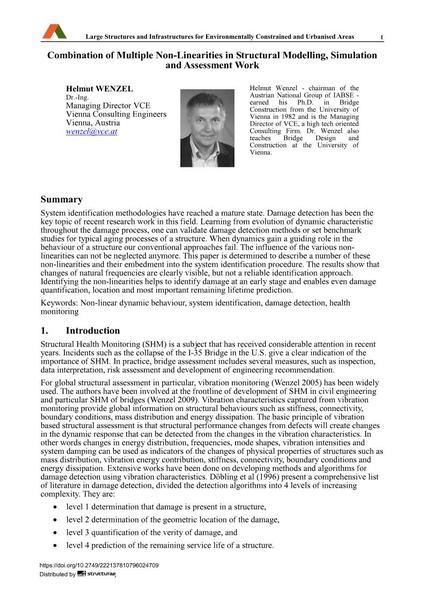Combination of Multiple Non-Linearities in Structural Modelling, Simulation and Assessment Work

|
|
|||||||||||
Bibliographic Details
| Author(s): |
Helmut Wenzel
|
||||
|---|---|---|---|---|---|
| Medium: | conference paper | ||||
| Language(s): | English | ||||
| Conference: | IABSE Symposium: Large Structures and Infrastructures for Environmentally Constrained and Urbanised Areas, Venice, Italy, 22-24 September 2010 | ||||
| Published in: | IABSE Symposium Venice 2010 | ||||
|
|||||
| Page(s): | 310-311 | ||||
| Total no. of pages: | 8 | ||||
| Year: | 2010 | ||||
| DOI: | 10.2749/222137810796024709 | ||||
| Abstract: |
System identification methodologies have reached a mature state. Damage detection has been the key topic of recent research work in this field. Learning from evolution of dynamic characteristic throughout the damage process, one can validate damage detection methods or set benchmark studies for typical aging processes of a structure. When dynamics gain a guiding role in the behaviour of a structure our conventional approaches fail. The influence of the various non- linearities can not be neglected anymore. This paper is determined to describe a number of these non-linearities and their embedment into the system identification procedure. The results show that changes of natural frequencies are clearly visible, but not a reliable identification approach. Identifying the non-linearities helps to identify damage at an early stage and enables even damage quantification, location and most important remaining lifetime prediction. |
||||
| Keywords: |
health monitoring damage detection system identification non-linear dynamic behavior
|
||||
